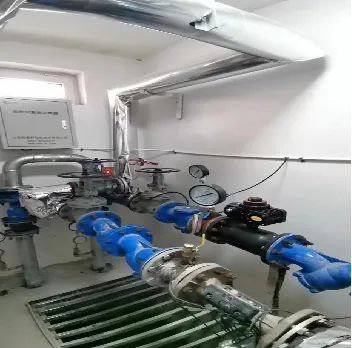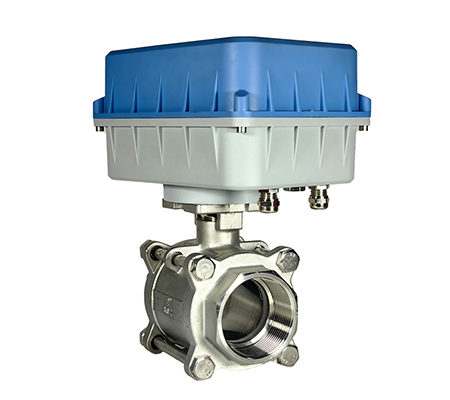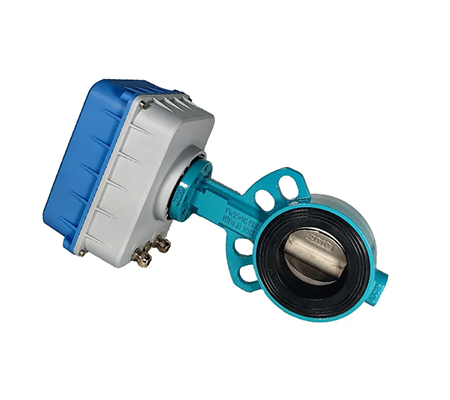Avoid your inquiry is delay response, please enter your WhatsApp/WeChat/Skype along with the message, so we can contact you at the very first time
We will reply you within 24 hours. If for urgent case, please add WhatsApp: +8613188899036, or WeChat: 0531-87968777. Or call 0531-87968777 directly.
* We respect your confidentiality and all information are protected. We will only use your information to respond to your inquiry and will never send unsolicited emails or promotional messages.
When unpredictable flow or sudden pressure drops disrupt your system, you risk downtime, high energy costs, and even equipment failure. These problems agitate every building automation engineer, plant manager, and mechanical contractor. The right flow control valve delivers reliability, precision, and peace of mind.
What is a flow valve and how does it work?
A flow valve, or flow control valve, is a device that regulates the flow of liquid or gas within a pipeline. By adjusting the opening, these valves allow precise control over fluid movement and system pressure, which is essential for efficiency and safety in industrial, residential, and public infrastructure applications.

Flow Valve in Industrial System
A flow valve—sometimes called a flow control valve—is the heart of any reliable fluid management system. These valves are designed to regulate, start, stop, or throttle the movement of fluids (liquid or gas) within a pipeline. In both industrial and residential zones, proper flow control ensures safety, energy efficiency, and system longevity.
Why does this matter?
Common Applications of Flow Valves:
| Application Scenario | Type of Flow Valve | Key Benefit |
|---|---|---|
| HVAC (heating & cooling) | Butterfly, ball, balancing | Regulate water flow and temperature, optimize zone control |
| Industrial processing | Needle, gate, control | Precise flow, high-pressure durability, chemical resistance |
| Municipal water supply | Check, gate, control | Prevent backflow, reliable shutoff, manage pressure |
| Residential plumbing | Ball, check, gate | Easy shutoff, leak prevention, reliable operation |
Related reading: See our smart valve solutions for water management
Flow control valves are built to regulate the rate, pressure, and direction of fluid flow through pipes. The valve’s design—be it a needle, ball, gate, or butterfly—determines its ability to offer precise flow regulation or rapid shutoff.
Flow control valves are used wherever fluid direction, speed, or volume must be precisely regulated.
| Control Type | Example Application | Operation Style |
|---|---|---|
| Manual | Residential shutoff, simple HVAC zone | Lever, handwheel |
| Automatic | Industrial process, smart HVAC | Actuator, PLC |
| Smart IoT | Remote management, energy-saving systems | Cloud app, sensor-driven |
Explore more: How floating point regulating valves offer precision
A single system might require multiple types of flow control valves—each suited to a different purpose and flow profile. The most commonly used are needle valves, ball valves, gate valves, and butterfly valves. Choosing the correct type is critical for system reliability, low resistance to flow, and efficient pressure regulation.

Stainless Steel Electric Ball Valves
Summary Table: Key Differences
| Valve Type | Best for | Flow Resistance | Precision | Durability | Common Material |
|---|---|---|---|---|---|
| Needle | Precise adjustment | High | High | Moderate | Stainless steel |
| Ball | Quick shutoff, low resistance | Low | Moderate | High | Stainless, brass |
| Gate | On/off, large pipes | Low | Low | High | Cast iron, steel |
| Butterfly | High volume, low pressure | Low | Moderate | High | Stainless, plastic |
Related topic: Electric butterfly valves in automation
Selecting the right flow valve isn’t just about matching pipe size. It’s about meeting specific application needs for flow regulation, energy efficiency, and system reliability. The wrong choice can lead to high energy bills, water hammer, or even equipment failure. The valve’s size, material, actuator type, and control method all play crucial roles in overall performance.
What to consider when selecting a flow control valve:
Tip: Always consult manufacturer data sheets and flow/pressure charts for the valve products you’re considering.
Case Study:
A mechanical contractor retrofitted an aging industrial zone with smart, proportional regulating valves. The system delivered 23% better flow regulation, eliminated recurring leaks, and cut downtime by half—all thanks to the precision of modern control valve solutions.
Many confuse check valves and flow control valves, but their roles are distinct.
Comparison Table:
| Function | Check Valve | Flow Control Valve |
|---|---|---|
| Purpose | Prevents backflow (one direction only) | Adjusts/controls flow rate & pressure |
| Operation | Automatically opens/closes | Manual or automatic; adjustable |
| Common Application | Water pumps, fire protection, gas lines | HVAC zones, process control, irrigation |
| Key Benefit | System protection, prevents damage | Precise flow management, efficiency |
Further reading: Smart water valve benefits for system protection
Needle Valves:
Allow precise flow adjustments using a slender, pointed plunger. Ideal for laboratory, calibration, or hydraulic applications where exact output is critical.
Ball Valves:
Quick to open or close, providing a reliable seal with minimal pressure drop across the valve. Suitable for shutoff and low-resistance needs in both industrial and residential systems.
Gate Valves:
Best for applications that require a valve to remain open for long periods or provide full-bore flow in large pipelines. Not for throttling or precision tasks.
Butterfly Valves:
Feature a rotating disc that regulates water or air flow. Lightweight, durable, and easy to automate—perfect for HVAC and water treatment facilities.

butterfly valve
Fun fact: Although needle valves can control flow with extreme accuracy, ball valves are often preferred when easy operation and fast shutoff are required.
More on advanced electric butterfly valve features
Correctly sizing a flow valve is essential for maintaining efficient system performance and avoiding a significant drop in pressure. Undersized valves cause high resistance and potential flow restrictions; oversized valves can make flow regulation difficult and imprecise.
How to size and select a flow valve:
| Application | Recommended Valve Type | Key Criteria |
|---|---|---|
| High-pressure hydraulic | Needle, gate | Precise flow, durability |
| Water supply | Gate, check, ball | Low resistance, easy shutoff |
| HVAC system | Butterfly, balancing | Volume, quick regulation |
| Industrial process | Control, ball, needle | Automation, reliability |
Tip: For new projects, consult with a valve manufacturer to ensure compatibility and compliance with local regulations.
A significant drop in pressure across the valve can cause downstream issues like inadequate flow, system inefficiency, or even equipment failure. Prevention comes down to good design and proper valve selection.
Best practices:
Expert Quote:
“Choosing the right flow valve, especially in high-pressure or multi-zone systems, means more than just picking a size. Precision and durability lead to lower maintenance costs and fewer operational surprises.”
— Senior Building Automation Engineer
Modern smart valve products offer more than just flow control—they provide real-time data, remote adjustability, and predictive maintenance for both industrial and building automation applications.
| Smart Valve Feature | Benefit |
|---|---|
| Wireless or IoT connectivity | Remote monitoring & adjustment |
| Programmable logic integration | Seamless building system automation |
| Predictive maintenance alerts | Reduce downtime, extend valve lifespan |
| Energy optimization algorithms | Lower operating costs, improve efficiency |
Explore M-Bus smart valve integration for modern buildings
Investing in high-quality valve products guarantees long-term durability, consistent performance, and fewer operational disruptions. The best flow valves are constructed with corrosion-resistant materials (like stainless steel), robust seals, and tested for extreme conditions.
Maintenance checklist:
Why reliability matters:
In industrial applications, a failed valve can halt production, damage equipment, or create safety risks. For residential and commercial HVAC, poor flow regulation can lead to discomfort, wasted energy, or property damage.
What is a flow valve used for?
A flow valve controls the flow rate and pressure of fluids (liquid or gas) in pipelines. It ensures optimal system operation, safety, and energy efficiency.
How do I select the right flow control valve for my system?
Consider the fluid type, desired flow rate, system pressure, valve material, control type (manual or automatic), and manufacturer’s technical data.
What’s the difference between a check valve and a flow control valve?
Check valves prevent backflow automatically; flow control valves let you adjust flow rate and pressure manually or automatically.
Can smart flow valves connect to building automation systems?
Yes, modern smart valves integrate with HVAC, industrial, and IoT platforms for real-time control and monitoring.
How can I prevent excessive pressure drop across a valve?
Choose the correct valve size/type, minimize piping restrictions, and use performance charts to estimate pressure drop.
Discover more about our advanced smart valve solutions, proportional regulating valves, and electric butterfly valves for any industry or application.